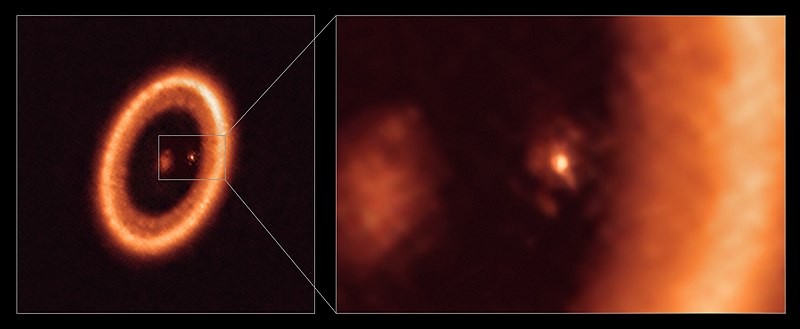Scientists have already discovered two planets forming in the disk of gas and dust around a star system known as PDS 70. Using the James Webb Space Telescope (JWST), experts have recently observed evidence of a third world taking shape around an infant star located 400 light-years away from Earth.
Birth of a Third World
The scientists who made the discovery are involved in the MIRI mid-infrared Disk Survey (MINDS) project. This survey aims to investigate the chemical inventory in the terrestrial planet-forming zone and to follow the gas evolution into the disk dispersal stage. It was also created to study the structure of protoplanetary and debris disks in the thermal mid-infrared.
Aside from this, the MINDS crew also witnessed a large spiral stream of material triggering the growth of one of the previously discovered planets, PDS 70C. Fed by this spiral stream, the giant planet is surrounded by its own disk of material, ready to give birth to moons. This discovery was made using JWST's Near Infrared Camera (NIRCam).
The presence of a third planet in the infant star system was previously proposed based on the observations of the Very Large Telescope (VLT), operated by the European Southern Observatory in Chile. According to MINDS team member Valentin Christiaens, the new infrared measurements they obtained for the two known protoplanets suggest the presence of heated material around them. This material has the potential to be the building block for moons forming around them.
So far, PDS 70 is the only protoplanetary disk where planets are caught in the act of forming. By studying this system in detail, the scientists are allowed to learn a lot about planet formation. Little is known about the properties of the potential third planet around PDS 70. If its existence is confirmed, this planet would be named PDS 70D.
The third world appears to be hidden in a large amount of dust and it orbits its star at about 13 times the distance between the Earth and the Sun. This distance places the planet near 1:2:4 mean-motion resonance with planets PDS 70B and PDS 70C. This means that its orbit would be twice as short as B and four times shorter than planet C. This is the same situation in our solar system with the three innermost Galilean moons of Jupiter: Ganymede, Europa, and Io.
In the future, the astronomers plan to make follow-up studies with the Extremely Large Telescope (ELT) to confirm and characterize the third world candidate. The data that they will gather would help them understand the composition of the forming planets as well as the properties of the materials around them which serve as building blocks for potential moons.
Infant Star System
Pico dos Dias (PDS) 70 is a very young T Tauri star located in the constellation Centaurus. Also known as V1032 Centauri, it is approximately 5.4 million years old and has a protoplanetary disk containing two nascent exoplanets.
Since its discovery in 1992, the PDS 70 star system has already been well-studied by various telescopes, such as the ground-based Atacama Large Millimeter/submillimeter Array (ALMA) and the VLT. It remains to be a fascinating star system for astronomers since the protostar and its protoplanetary disk are too young compared to our 4.5-billion-year-old Solar System.
RELATED ARTICLE: Exoplanet Discovery: NASA's Hubble Space Telescope Witnesses Growing, Feeding Giant Planet
Check out more news and information on Exoplanet in Science Times.















